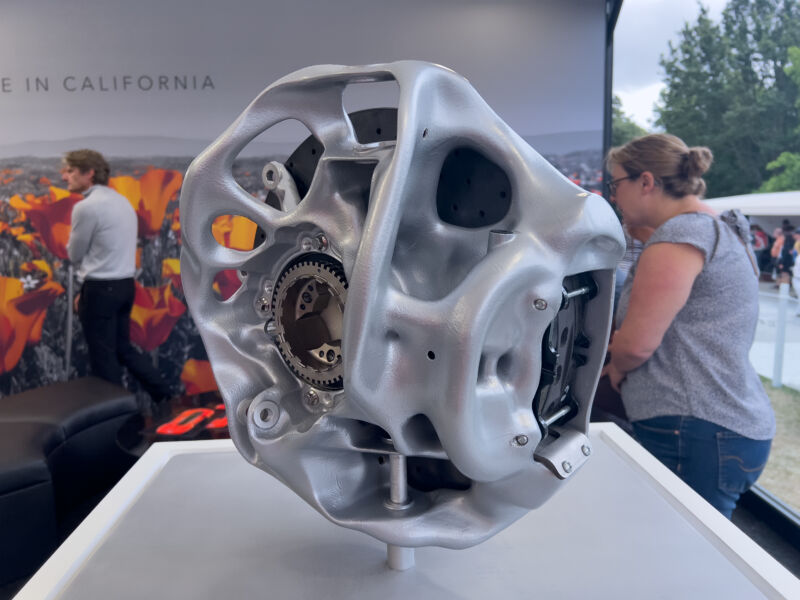Enlarge / A 3D-printed Czinger brake node that combines the caliper and upright with 40 percent less mass than a conventional assembly. (credit: Jonathan Gitlin)
Polestar provided a flight from Washington DC to London and back, and two nights in a hotel so we could visit its UK R&D center and attend the Goodwood Festival Of Speed. While we were there, we also spoke to Czinger about 3D printing. Ars does not accept paid editorial content.
Additive manufacturing, or 3D printing as it’s more commonly known, is more a tool for rapid prototyping in the auto industry than manufacturing actual parts to be used on actual cars. Well, mostly. An interesting company working in this space is Divergent 3D, which has already been supplying 3D-printed parts like subframes for low-volume cars for several car companies, including Aston Martin and Mercedes-AMG.
Divergent gave rise to another startup called Czinger, which acts as something of a showcase for Divergent’s printing tech, using it to build what it says will be the world’s fastest production car. We caught up with company founder Kevin Czinger at this year’s Goodwood Festival of Speed, where among other things, we discovered Divergent has diversified its client base and is now getting into aviation, 3D printing wings for the drone maker General Atomics.
This subframe assembly is made from several 3D printed components. (credit: Jonathan Gitlin)
We took a look at the Czinger 21C at last year’s Monterey Car Week—to quickly recap, it’s a tandem-seating hybrid supercar with 1,250 hp (932 kW) and a vast amount of aerodynamic downforce that has allowed it to break production car track records at Laguna Seca and the Circuit of the Americas.
Read 10 remaining paragraphs | Comments

